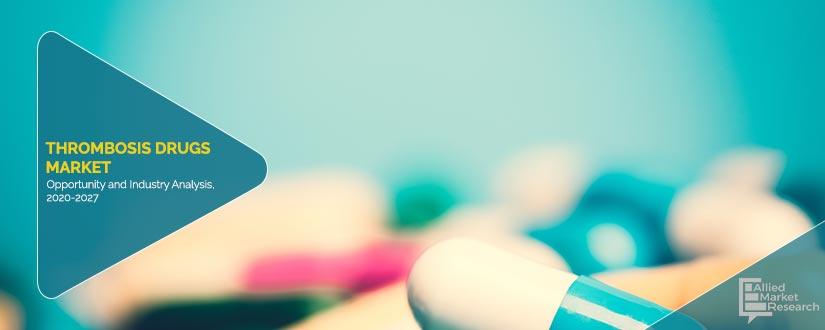Thrombosis drugs are defined as the drugs that inhibit the function of platelets to prevent the formation of clots and inhibit the formation of new clots. These drugs help to prevent conditions such as arterial fibrillation and deep vein thrombosis. These drugs may cause side effects such as bleeding, vomiting, heavy menstrual periods and bleeding from gums and nose. Thrombotic treatment is used to cure or to dissolve the clots to prevent blockage of specific organ and the drugs which are used in thrombotic are called blood thinners; for instance, heparin and warfarin.
Budd-Chiari is a rare condition that blocks hepatic vein or of the hepatic part of the second rate vena cava. This type of thrombosis presents symptoms such as stomach pain and expanded liver. Vein thrombosis influences the hepatic entryway vein which can prompt gateway hypertension and decrease flow of blood to the liver. Renal vein thrombosis is the check of the renal vein by clots. Thrombosis drugs has many advantages such as they start working faster when you begin treatment, and their effects don’t last long after you stop taking them. The side effects of these drugs are migraine, unusual vision, shortcoming of the face and appendages on one side of the body and seizures.
COVID-19 scenario analysis:
Pharmaceutical and biotech companies together with governments around the globe are working to address the COVID-19 outbreak, from supporting the development of vaccines to planning for medicines supply chain challenges. Currently, around 115 vaccine candidates and 155 molecules are in the R&D pipeline. Moreover, commonly used drugs such as Hydroxychloroquine, have witnessed dramatic surge in demand for the management of COVID-19. Such high demand for these drugs has presented huge opportunity for manufacturers of COVID-19 management drugs, as many developed countries are short of these drugs. Owing to the demand for vaccine and treatment drugs for COVID-19, the pharmaceutical and biotechnology industry is expected to witness a significant growth in the future.
Top impacting factors: Market Scenario Analysis, Trends, Drivers and Impact Analysis
According to a WHO report, it is found that one in each three individuals was viewed as overweight and around one of every thirteen grown-ups were found with high weight. The increase in the utilization of liquor, tobacco with obesity cause a high risk of creating critical hypertension on veins and further causing a few thrombosis related difficulties. Hence, these factors would contribute to the growth of the thrombosis drugs market growth.
Lack of awareness about the seriousness of thrombosis is restraining the growth. Thrombosis is caused because of certain cardiovascular issues because of increasing age. Currently, increasing geriatric population, because of unhealthy way of life in developing markets. This factor is driving the growth of thrombosis market. The major factors contributing to the growth are increase in cardiovascular cases, injury cases and rising geriatric population. Absence of cognizance with respect to venous thromboembolism conditions restrains the growth of the market. The main opportunities are developing events of profound vein thrombosis.
Key benefits of the report:
- This study presents the analytical depiction of the global thrombosis drugs market along with the current trends and future estimations to determine the imminent investment pockets.
- The report presents information related to key drivers, restraints and opportunities along with detailed analysis of the share.
- The current market is quantitatively analyzed to highlight the global scenario.
- Porter’s five forces analysis illustrates the potency of buyers & suppliers in the thrombosis drugs market.
- The report provides a detailed global thrombosis drugs market analysis based on competitive intensity and how the competition will take shape in coming years.
Questions answered in the global thrombosis drugs market research report:
- Who are the leading market players active in the global thrombosis drugs market?
- What are the current trends that will influence the market in the next few years?
- What are the driving factors, restraints, and opportunities in the thrombosis drugs market?
- What can be the challenges for the global thrombosis drugs in future?
- What are the projections for the future that will help in taking further strategic steps?
Thrombosis Drugs Market Report Highlights
| Aspects | Details |
| By Disease type |
|
| By Distribution channel |
|
| By Drug class |
|
| By Region |
|
| Key Market Players | AstraZeneca plc, Bayer AG, Boehringer Ingelheim GmbH, Pfizer, Johnson & Johnson, Aspen Pharmacare Holdings Limited, Bristol-Myers Squibb Company, GlaxoSmithKline plc., Sanofi, Baxter International Inc. |
Loading Table Of Content...




